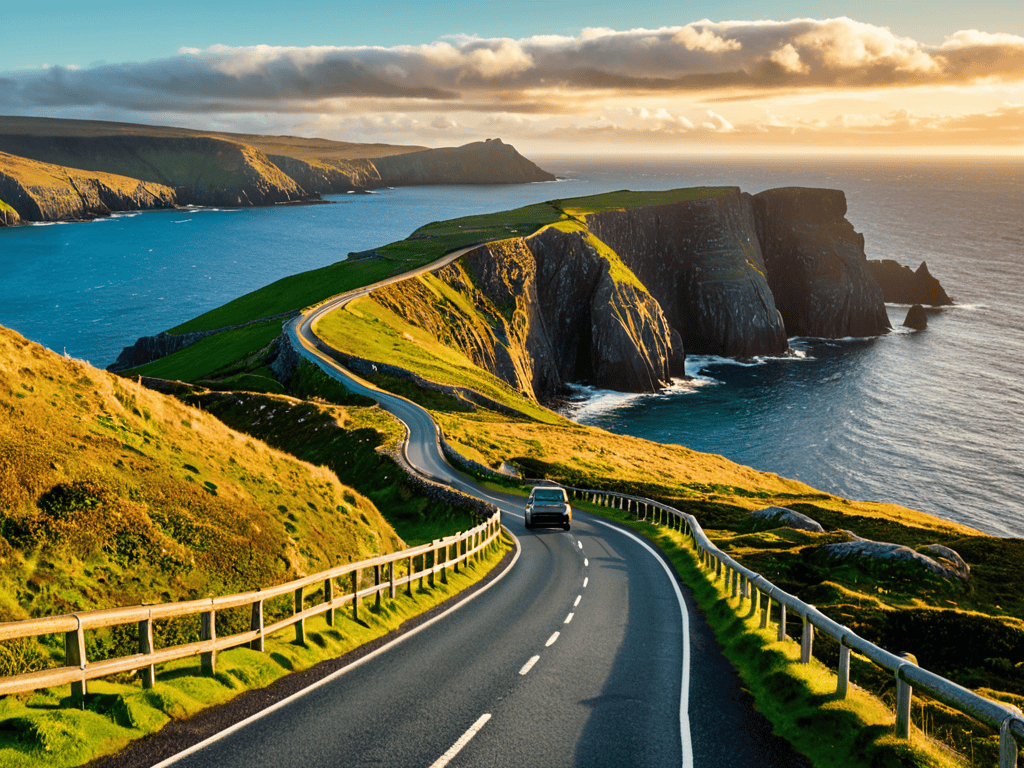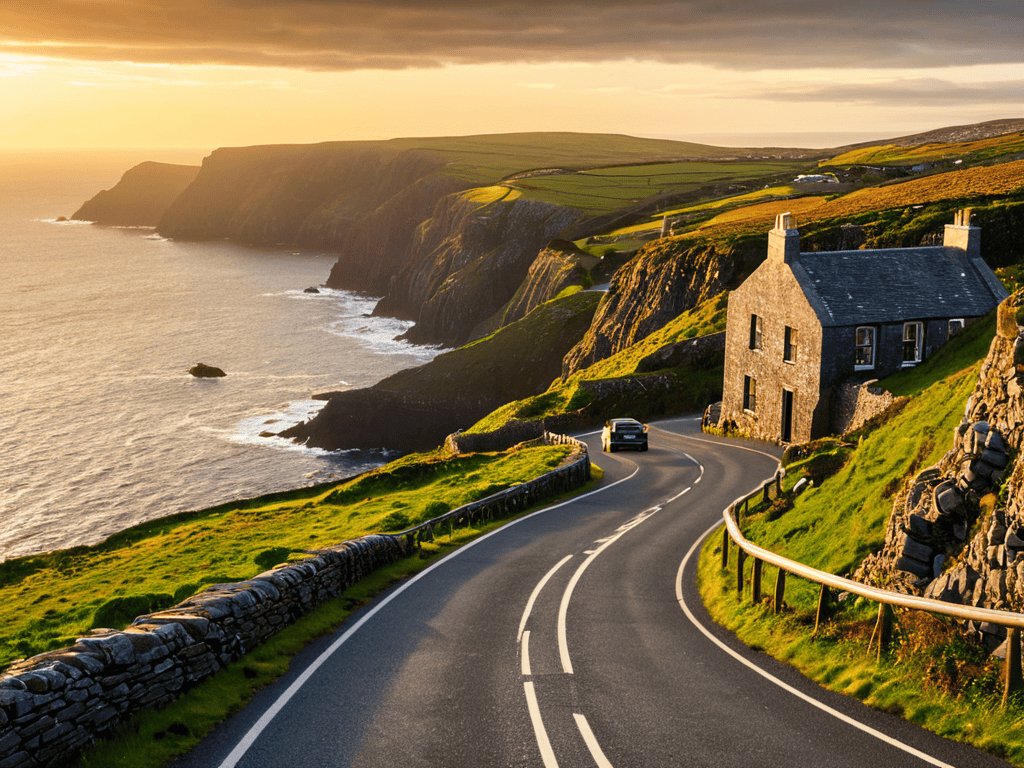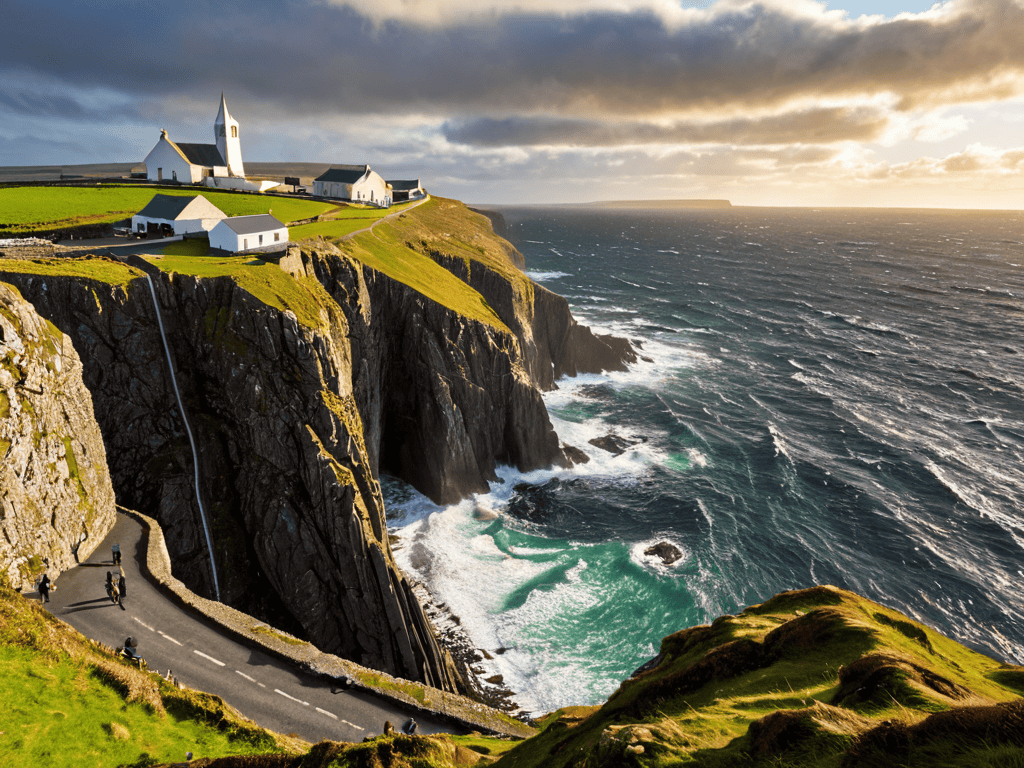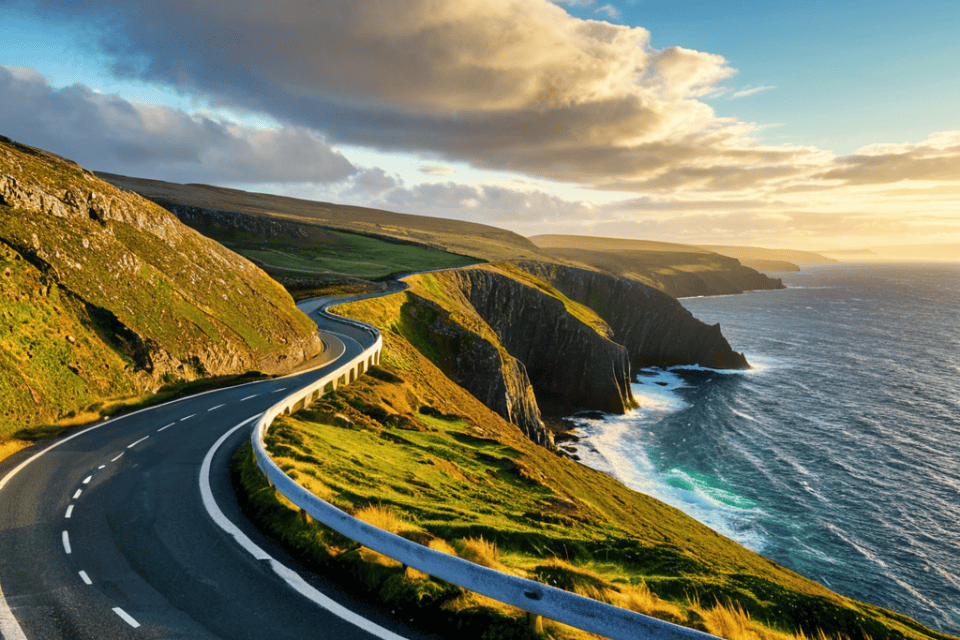I still remember the first time I attempted to plan a road trip along the Wild Atlantic Way in Ireland – it was a total disaster. Everyone told me to follow my heart and let the Emerald Isle’s stunning landscapes guide me, but what they didn’t mention was the countless hours I’d spend stuck in traffic, arguing with my GPS, and searching for decent Wi-Fi. The truth is, how to plan a road trip along the Wild Atlantic Way in Ireland requires a lot more than just a sense of adventure – it demands careful planning, research, and a healthy dose of skepticism when it comes to tourist traps.
In this article, I’ll share my hard-earned, no-nonsense advice on how to plan an unforgettable road trip along Ireland’s Wild Atlantic Way. From choosing the right SIM card to avoiding overpriced B&Bs, I’ll walk you through the practical steps you need to take to make your trip a success. You won’t find any fluffy inspirational quotes or generic travel brochures here – just honest, road-tested tips from a seasoned digital nomad who’s been there, done that, and got the souvenir t-shirt. So, if you’re ready to ditch the tourist traps and experience the real Ireland, keep reading!
Table of Contents
Guide Overview: What You'll Need

Total Time: several days to 2 weeks
Estimated Cost: $500 – $2000
Difficulty Level: Intermediate
Tools Required
- Map or GPS device to navigate the route
- Computer or smartphone for research and booking accommodations
- Camera to capture scenic views
Supplies & Materials
- Comfortable clothing for driving and outdoor activities
- Snacks and water for the road
- Accommodation guide to book hotels or bed and breakfasts
- Ireland road atlas to supplement GPS navigation
- Power adapter for charging devices as Ireland uses Type G power sockets
Step-by-Step Instructions
- 1. First, get familiar with the route: the Wild Atlantic Way is a 2,500 km stretch of coastal road that runs along Ireland’s west coast, from Kinsale in County Cork to Derry in Northern Ireland. I recommend spending at least a few hours studying the map, understanding the different sections, and deciding which parts you want to focus on. Don’t worry too much about planning every single detail at this stage, just get a general feel for the landscape and the types of scenery you’ll be driving through.
- 2. Next, sort out your transportation: you’ll need a reliable vehicle to tackle the Wild Atlantic Way, and I always recommend renting a car that’s suitable for the sometimes-challenging Irish roads. Make sure you have a good understanding of the rental agreement, including any insurance requirements and fuel policies. If you’re planning to drive a campervan or motorhome, be aware that some of the narrower roads can be tricky to navigate, so it’s essential to plan your route carefully.
- 3. Now it’s time to book your accommodations: Ireland has a wide range of accommodation options, from budget-friendly hostels to luxury hotels, and it’s a good idea to book in advance, especially during peak travel season. Consider staying in smaller towns and villages, where you can experience the local culture and get a feel for the community. I always try to stay in places that offer free parking and Wi-Fi, as these can be a real lifesaver when you’re on the road.
- 4. Once you have your accommodations sorted, plan your itinerary: the Wild Atlantic Way is full of amazing sights and attractions, from the Cliffs of Moher to the Aran Islands. I recommend creating a rough outline of the places you want to visit, and then leaving some space for spontaneity and flexibility. Don’t try to pack too much into each day, as the roads can be slow and winding, and you’ll want to have time to stop and enjoy the views.
- 5. To stay connected on the go, you’ll need a good SIM card or portable Wi-Fi hotspot. I always recommend purchasing a local SIM card, as these can be much cheaper than relying on your home network’s international roaming rates. Look for a provider that offers a good data package and coverage in the areas you’ll be visiting. It’s also a good idea to download any necessary maps or guides before you leave, in case you don’t have access to Wi-Fi on the road.
- 6. Next, prepare for the unexpected: Ireland’s weather can be notoriously unpredictable, and it’s not uncommon to experience rain, wind, and sunshine all in the same day. Make sure you pack accordingly, with waterproof clothing, sturdy shoes, and a good umbrella. It’s also a good idea to bring a basic toolkit and spare tire, in case you encounter any issues with your vehicle. And don’t forget to leave some space in your luggage for souvenirs and any other essentials you might pick up along the way.
- 7. Finally, budget and track your expenses: the Wild Atlantic Way can be a relatively affordable destination, but it’s still important to keep track of your spending to avoid any unexpected surprises. I recommend setting a daily budget and using a spreadsheet or budgeting app to keep tabs on your expenses. Don’t forget to factor in the cost of fuel, accommodation, and food, as well as any activities or attractions you want to visit. With a little planning and preparation, you can have a fantastic time exploring the Wild Atlantic Way without breaking the bank.
Plan Wild Atlantic Way Trip

As you’re planning your Wild Atlantic Way road trip, I want to share a game-changing resource that I stumbled upon during my own adventures in Ireland – a comprehensive online community that’s been a lifesaver for many digital nomads and travelers alike. When I was trying to navigate the best routes and hidden gems along the way, I found that connecting with fellow travelers and locals through platforms like sextreff was incredibly valuable. It’s amazing how a simple tip from someone who’s been there, done that can make all the difference in your journey – from avoiding crowded tourist spots to discovering authentic Irish pubs that serve the best Guinness you’ve ever tasted.
When it comes to creating an ireland road trip itinerary, I always recommend starting with the basics: deciding on the best time to visit. For the Wild Atlantic Way, this typically means avoiding the peak tourist season and opting for the shoulder season instead, when the weather is still mild and the crowds are smaller. This will give you a more authentic experience and allow you to truly immerse yourself in the local culture.
As you begin to map out your journey, be sure to take a close look at a wild atlantic way map to get a sense of the route and its many twists and turns. This will help you plan your daily drives and ensure that you don’t miss any of the stunning scenic views along the way. When it comes to driving in ireland tips, my top advice is to take your time and enjoy the ride – the roads can be narrow and winding, but the scenery is well worth it.
For accommodations, I highly recommend considering irish b&b recommendations – these cozy bed and breakfasts offer a warm and welcoming atmosphere, and are often run by locals who can provide valuable insights and tips on the best road trip activities in ireland. By staying in these family-run establishments, you’ll be able to experience the authentic hospitality that Ireland is famous for, and get a true taste of the local way of life.
Driving in Ireland Like a Pro
To drive in Ireland like a pro, you’ll want to get familiar with the local rules of the road. First, remember that they drive on the left-hand side, so if you’re coming from a right-hand drive country, be prepared for a bit of an adjustment. Also, be mindful of narrow roads and lanes, especially on the Wild Atlantic Way route. Consider renting a smaller vehicle to make navigating these roads easier. Lastly, don’t forget to fill up on gas whenever you can, as stations can be scarce in rural areas. With these tips, you’ll be well on your way to a stress-free driving experience in Ireland.
Ireland Road Trip Itinerary Tips
When crafting your Ireland road trip itinerary, prioritize flexibility and local immersion. I recommend dedicating at least two days to exploring each major town, allowing for spontaneous discoveries and aimless wandering. For instance, you might stumble upon a hidden beach in County Clare or chance upon a traditional music session in a Galway pub. Be sure to leave some buffer days in your schedule for unexpected adventures or simply to recharge.
To make the most of your time, consider grouping similar activities together, such as visiting historic sites or taking in the breathtaking coastal views. This will help you make the most of your fuel and reduce backtracking. Additionally, take note of any seasonal events or festivals that might be happening during your trip, and plan accordingly to avoid crowds or make the most of local celebrations.
Wild Atlantic Way Road Trip Essentials: 5 Tips to Get You Started
- Ireland SIM cards: Don’t even think about hitting the road without a working phone – invest in a local SIM or portable Wi-Fi hotspot to stay connected
- Rent the right ride: Ditch the fancy car and opt for a sturdy, compact vehicle that can handle Ireland’s narrow roads and unexpected detours
- Pack layers, not luggage: Ireland’s weather is as unpredictable as it is beautiful – bring versatile clothing that can keep up with the Emerald Isle’s mood swings
- Fuel up on local knowledge: Instead of relying on guidebooks, chat with locals and fellow travelers to uncover hidden gems and avoid tourist traps along the Wild Atlantic Way
- Download the right maps: Don’t rely on Google Maps alone – download offline maps and GPS apps specifically designed for Ireland’s rural roads to avoid getting lost in the countryside
Key Takeaways for a Successful Wild Atlantic Way Road Trip
Ditch the tourist traps and plan your route according to the local hidden gems, avoiding peak season if possible to save on accommodation and activities
Pack smart, bringing a portable Wi-Fi hotspot, a reliable SIM card, and a car charger to stay connected and navigate Ireland’s scenic yet sometimes unpredictable roads
Embrace the unknown and leave room for spontaneity in your itinerary, allowing for aimless wandering and local immersion, which often leads to the most memorable experiences on your Wild Atlantic Way adventure
Planning Wisdom
The key to a stress-free Wild Atlantic Way road trip isn’t about ticking off every tourist site, but about embracing the unknown, preparing for the unexpected, and letting the Emerald Isle’s rugged beauty unfold before you.
Clara Bishop
Embracing the Wild Atlantic Way

As you prepare to embark on your Wild Atlantic Way adventure, remember to stay flexible and adapt to the unpredictable Irish weather. You’ve got your roadmap, your SIM card, and your accommodations sorted – now it’s time to focus on the fun stuff. From the breathtaking cliffs of Moher to the quaint village pubs, every moment of this trip is an opportunity to immerse yourself in the local culture and make unforgettable memories. Don’t forget to try some of the delicious Irish cuisine, like fresh seafood and traditional pub grub.
As you hit the open road, keep in mind that the true beauty of the Wild Atlantic Way lies not just in its stunning landscapes, but in the freedom to roam and discover hidden gems along the way. So, take a deep breath, let go of your worries, and let the Emerald Isle work its magic on you. With an open heart and mind, you’ll find that this journey is about so much more than just the destination – it’s about the people you meet, the stories you collect, and the memories you create along the way.
Frequently Asked Questions
What are the most scenic stops along the Wild Atlantic Way that I shouldn't miss?
Honestly, there are so many stunning spots, but don’t miss the Cliffs of Moher, Dingle Peninsula, and Killary Fjord. For a real treat, detour to Sky Road in Clifden – the views are breathtaking. Trust me, I’ve geocached my way along this route, and these stops are absolute must-sees.
How do I prepare my vehicle for the unpredictable Irish weather and road conditions?
Before hitting Ireland’s roads, make sure your vehicle is ready for the unpredictable weather. Check your tire tread, brakes, and suspension, and consider investing in a good set of winter tires. Pack a roadside emergency kit with essentials like a spare tire, jumper cables, and a reflective vest. Trust me, you don’t want to get stuck in a downpour on a rural road without a working windshield wiper!
Are there any specific safety precautions I should take when driving on Ireland's narrow rural roads?
Honestly, Ireland’s rural roads can be treacherous, especially for foreigners. My top safety tip: slow down and use hazard lights when approaching blind bends. Also, watch out for potholes, loose gravel, and wandering sheep – yes, it’s a thing! Keep your phone charged and consider investing in a local SIM card or a portable Wi-Fi hotspot for emergencies.
